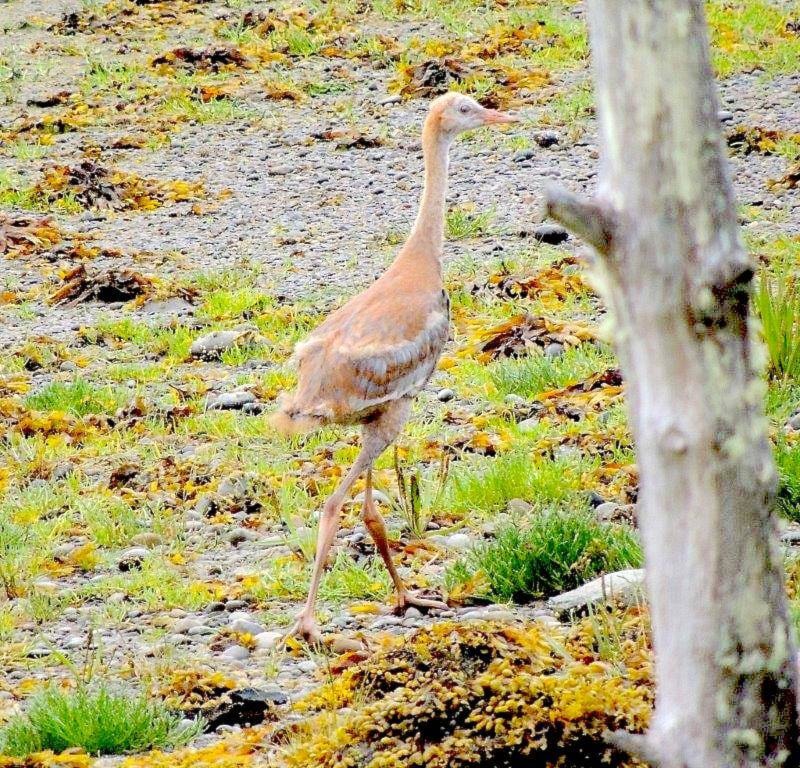By Margo Hearne
The sweet month of July has passed us by. We are into migratory action and wet-weather drop-ins. At least 60 Townsend’s Warblers passed through town yesterday after a particularly hard downpour. They fed busily in the dripping trees. It was quite something. We know that songbirds migrate through here, but they are so small and subtle we don’t usually see many. In the past, songbirds have landed on B.C. ferries during wet weather. They rest for a while before taking off again. So it was with the warblers yesterday; they had a feed, a rest, and were on their way.
Out over Delkatla, small flocks of swallows race through the air. Some are fully fledged Tree Swallows, brownish with white underparts, that could be mistaken for Northern Rough-winged Swallows. But Rough-wings are darker overall and slightly smaller. They are also very rare on Haida Gwaii. Barn Swallows are also sweeping low over the long grass, picking up insects as they go. They can feed their young in the air, nimble acrobats that they are.
There has been sadness over Barn Swallows recently. A nest of four young showed up at the Nature Centre in a clean box all ready to be fed. They survived for a few days, but they didn’t really have a chance. Once the parents have gone there is no one to keep them in that feathery warmth so necessary for survival. They feed well, but often simply die of loneliness and abandonment. Clumsy humans can only try, but it’s usually a lost cause from the start. Destroying active Barn Swallow nests has led to their endangerment, and they are now a blue-listed species. Parent birds rarely re-nest successfully in our short summer season. So a generation is gone. However, down the road at a friend’s place we are keeping watch to see if their second brood will hatch successfully (thanks Jenny!) and we’ll let you know. We live in hope.
The Sandhill Cranes have raised two young successfully in Delkatla this year, and a family of four feeds along the edge of Delkatla at low tide. Interestingly, one young bird, still with downy head feathers, jumped onto one of the large tidal rocks and fed on whatever lived in the crevices. Cranes are omnivorous feeders and take salmon fingerlings as well as plant roots. Now we know they also eat small crustaceans attached to large rocks. They are so stalky and awkward-looking it makes one smile. They are not fully fledged yet, so they won’t be leaving for another few weeks.
A small flock of large shorebirds fed near the cranes recently. They were nearly the same colour but had long bills and shorter legs. Marbled Godwits! What a surprise. They are certainly leaving the nesting grounds early. Peter’s research shows the godwits that come through here nest north of the Aleutians, in the Bering Sea. What are they doing here so early? They were all adult birds, so maybe, like some of the cranes that spend the summer here, they didn’t nest, but drifted down the coast to show up in Delkatla, in July, in the rain.
